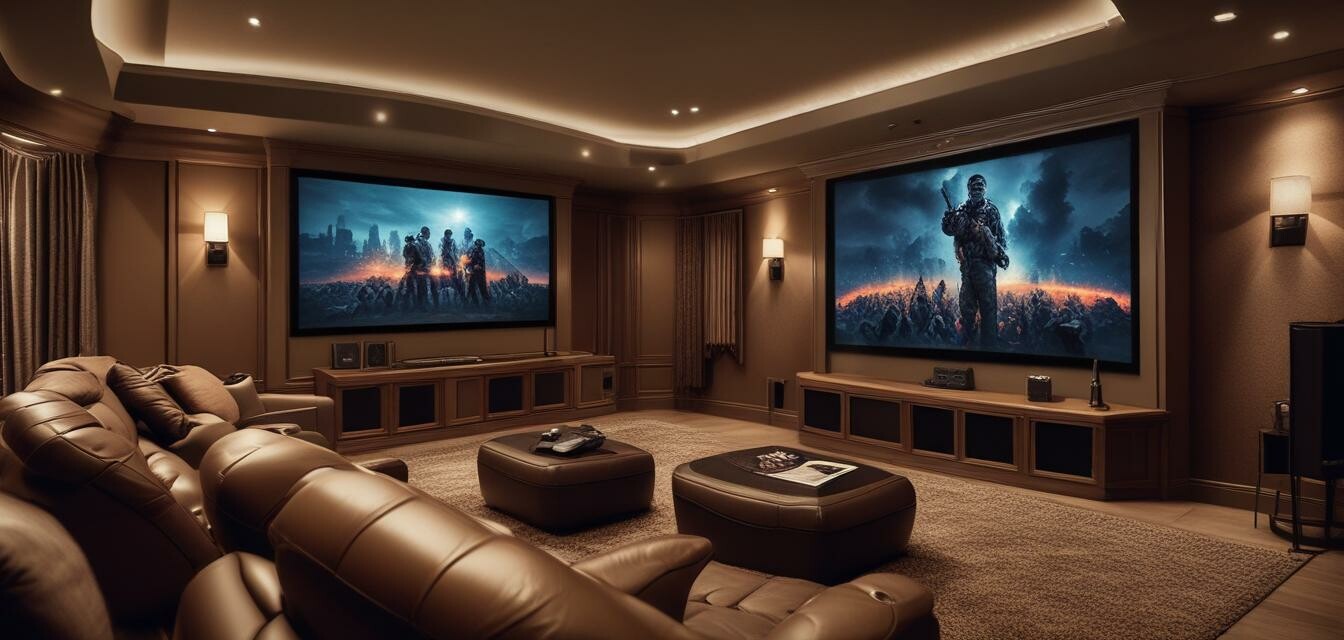
How Streaming Services Are Influencing Home Theater Design
Key Takeaways
- Streaming services are changing consumer preferences in home theater design.
- High-quality audio is more critical than ever for streaming experiences.
- Flexibility in setups encourages users to design multi-purpose spaces.
- Integration with smart home technology is key for modern systems.
- Emerging trends include immersive sound formats and on-demand viewing capabilities.
The rise of streaming services has dramatically altered the landscape of home theater design, encouraging enthusiasts and casual viewers alike to rethink their space. As services like Netflix and Amazon Prime become the go-to for entertainment, understanding how these platforms influence luxury home theater systems is essential for today's consumers.
Streaming services reshaping user preferences
Gone are the days when home theaters were merely about having a massive screen and comfortable seating. Today, streaming services have introduced a new range of viewing habits and expectations. Here's how:
- Content variety: With thousands of titles available at any time, users prioritize versatile setups that can accommodate various viewing formats.
- Accessibility: The convenience of streaming means more users are integrating their home theaters into everyday living spaces.
The importance of audio quality
As streaming services release more high-definition and immersive content, audio quality has taken center stage in home theater design. Users are gravitating toward:
- Surround sound systems: Formats like Dolby Atmos provide an auditory experience that perfectly complements high-resolution visuals.
- Soundbar solutions: For those looking to save space, quality soundbars deliver impressive audio without bulky setups.
Comparison of audio formats
| Audio Format | Description | Best Used With |
|---|---|---|
| Dolby Atmos | Immersive sound technology that adds height channels. | Movies and gaming. |
| DTS:X | Dynamic object-based audio for an immersed experience. | Multichannel music and films. |
| 5.1 Surround Sound | Traditional surround sound setup with five speakers and a subwoofer. | Standard home theater applications. |
Flexible and versatile setups
Today's consumers desire multi-use environments that cater to various activities, from watching movies to hosting game nights. This has led to:
- Multi-purpose rooms: Combining a home theater with a living space is becoming more common.
- Modular furniture: Adjustable seating arrangements to accommodate different audiences.
Smart home integration
The rise of smart home technology plays a significant role in the evolution of home theater design. Many consumers are opting for:
- Voice control: Seamless integration with systems like Alexa and Google Assistant for hands-free operation.
- Home automation: Centralized control of lighting, audio, and video settings for an optimized experience.
Examples of smart technology in home theaters
| Device | Function |
|---|---|
| Smart TVs | Stream content from various platforms without the need for external devices. |
| Streaming devices | Connect to TVs to access streaming services easily. |
| Automated blinds | Control lighting for optimal viewing conditions. |
Emerging trends in home theater
As technology advances, new trends will continue to shape how we design our home theaters:
- Immersive video formats: Look out for visuals in 4K and 8K resolution coming from streaming platforms.
- Wireless technology: As systems become more flexible, wireless audio-video solutions will be in high demand.
Conclusion
Streaming services have fundamentally changed the way we approach home theater design. Today’s users demand versatility, high-quality audio, and smart technology integration. This trend has pushed consumers towards customizing their spaces, reflecting their unique preferences and lifestyle. As we look to the future, staying aware of these evolving influences will ensure you remain ahead of the curve in your home entertainment experience.
Tips for designing your home theater for streaming
- Choose a screen size appropriate for your viewing distance.
- Invest in sound quality—consider both speakers and sound dampening.
- Incorporate smart home features for easy control of your system.
Pros
- Enhanced viewing experience with high-quality sound and visuals.
- Flexible setups that cater to multiple activities.
- Integration with smart technology makes operation seamless.
Cons
- Initial setup costs can be high.
- Technology can become outdated quickly.
For a deeper dive into audio and video technologies, check out our Buying Guides for tips on selecting the best equipment. Stay updated on the latest innovations in our News and Trends section.
Discover how to optimize your home theater space by reading our Setup Tips.

